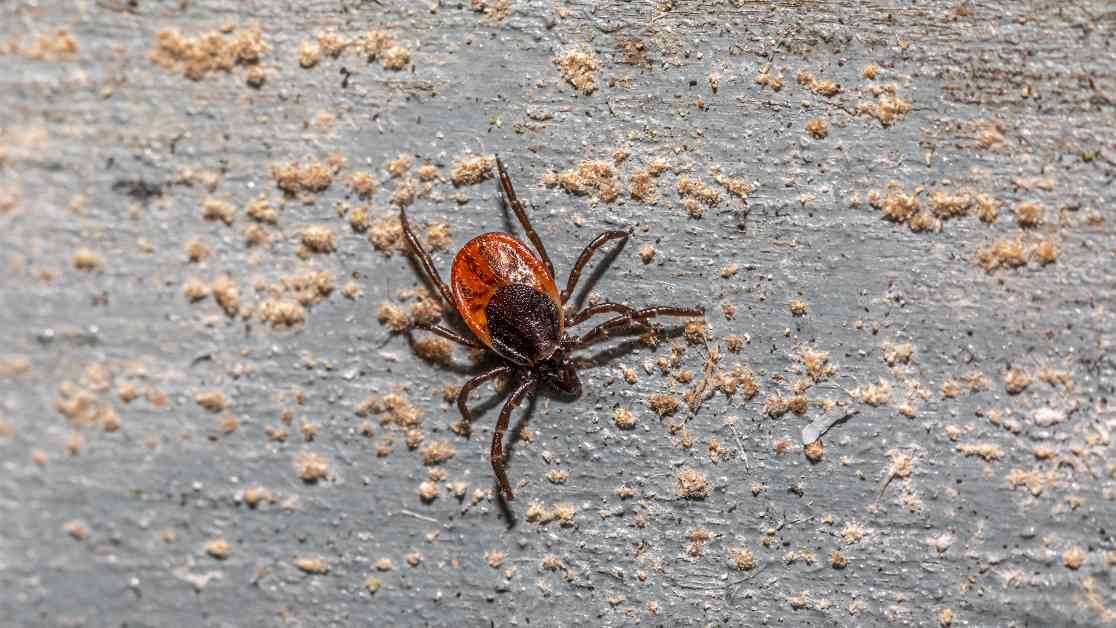Ellen Stromdahl was at a garden party in coastal Virginia back in June 2023 when her buddy Albert Duncan just passed out outta nowhere. Duncan, who’s in his mid-80s, loves the great outdoors and stays pretty active for his age. Stromdahl, an entomologist with the United States Army Public Health Center, rushed over to help him out. When Duncan woke up, she noticed his normally tan skin had a yellowish tint. “This dude looks jaundiced,” she thought to herself.
Duncan ended up spending a few days going in and out of the ER. His docs ran a bunch of blood tests and ruled out the usual stuff for an older guy like heart disease, diabetes, and pneumonia. Finally, at Stromdahl’s suggestion, Duncan’s wife, Nancy, asked the docs to test him for babesiosis, a rare disease that’s kinda like malaria but caused by tiny parasites carried by black-legged ticks. Turns out, he not only had babesiosis but also Lyme disease, another illness from the same tick.
If they caught the infections earlier, they could’ve treated it with some antibiotics and antiparasitic meds. But since Duncan was already pretty far into his illness, he needed this thing called an exchange transfusion. The docs basically sucked all the infected blood out of him and replaced it with donor blood. Two weeks after the party, he was back to normal.
Babesiosis is rare — only about 2,000 cases in the US each year, according to the CDC. But what’s even weirder is that Duncan got it in Virginia, a state that only had 17 cases from 2016 to 2023.
This got Stromdahl thinking if babesiosis might be on the rise in Virginia and nearby states. So, she spent the next two years teaming up with 21 tick experts from all over the East Coast and South Africa to check out how common Babesia microti, the parasite behind babesiosis, was in ticks and people in those areas from 2009 to 2024.
Their study, which got published in April in the Journal of Medical Entomology, showed that the Babesia parasite is spreading pretty quickly through the mid-Atlantic region. This change, tied to shifting weather patterns, could be a big problem for folks in areas where the disease used to be rare.
“Where we found ticks with the parasite, we found cases,” Stromdahl said. “It’s not a huge number, but that’s why we gotta warn folks before more people get sick.”
Babesiosis can be mistaken for malaria and is caused by parasites from the Babesia genus. About 1 in 4 cases don’t even show symptoms. But for those who do, especially older adults and folks with weaker immune systems, it can get pretty rough with symptoms like fever, chills, anemia, fatigue, and jaundice. If left untreated, the parasites can mess up your organs and even be fatal.
Babesiosis is usually found in the Northeast and Upper Midwest. Between 2015 and 2022, cases in states like Connecticut, Massachusetts, and New York went up by 9% each year. Experts think this rise is mostly because of warmer temps from climate change, giving ticks more chances to bite people and spread around.
The southern mid-Atlantic has always been a good spot for ticks, but lately, warmer winters have made some states there perfect breeding grounds for ticks and small critters that carry Lyme bacteria and Babesia parasites. Plus, above-average rainfall makes the soil all wet and humid, great for ticks to thrive. The winter of 2023 to 2024 was 4 to 6 degrees warmer than usual and had record-breaking rainfall in many states.
Stromdahl has been studying ticks and diseases for years and even she was surprised by how far the Babesia parasite had spread. Her team found the B. microti parasite in ticks from Virginia, Maryland, and Delaware — states where it was never seen before. Many of these ticks also had the bacteria that cause Lyme disease. The link between Lyme and babesiosis is still a big mystery, but they do know that Lyme is like a heads up that babesiosis might be on the way.
“The findings in the Stromdahl paper match what we’ve seen in the Northeast: Babesia infection tends to spread where Lyme infection is already hangin’ out,” said Shannon LaDeau, a disease expert from the Cary Institute of Ecosystem Studies.
The researchers also checked where babesiosis cases were clustered. Two spots that stood out were the five counties around Baltimore and the Delmarva Peninsula, which stretches across parts of Delaware, Maryland, and Virginia. A big chunk of Maryland’s cases were from Baltimore, and almost 40% of cases from Virginia, Maryland, West Virginia, and DC were from the Delmarva Peninsula.
Experts think babesiosis cases are way underreported since docs don’t always know what to look for. Stromdahl and her team hope their findings will push health departments in the mid-Atlantic to pay more attention to babesiosis, keep an eye out for infected ticks, and warn the public. If docs in these areas know to test for babesiosis, they can catch it early and avoid serious cases like Duncan’s.
“Places in the southern mid-Atlantic should expect more babesiosis cases,” the authors warned. “Tick populations are growing so fast that health advice on preventing tick-borne diseases could become outdated real quick.”
Along with climate change, other factors like reforestation efforts bringing back deer populations and more suburban areas creeping into forests are helping ticks spread. As LaDeau put it, tick-borne diseases are definitely becoming a bigger risk. The challenge now is figuring out where and when infected ticks are coming into contact with people.
In the end, the rise in tick populations is definitely something to keep an eye on — not just for the bugs but for our own health too.














